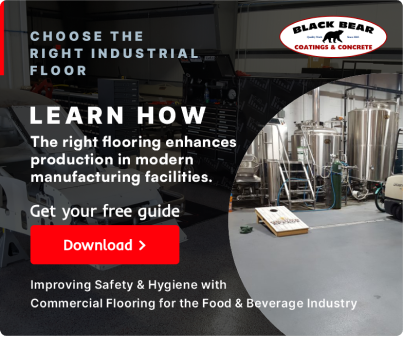One of the most common questions we get from Operations Managers is how we value-engineer solutions for food and beverage processing plants. With over 25 years of experience in the industrial flooring space, we understand the challenges and conditions that need to be addressed, and always assess the environment before presenting options to managers in…
Search Results for:
To say that green building is a trend would be a misnomer. It’s far from just a developer’s fad sure to be dated in a given period of time. On the contrary, green building is a movement that has proved its value in the residential industry, and it’s now taking commercial construction by storm. More…
Today’s market is saturated with industrial flooring options for restaurants and commercial kitchens. Combining substance and style, new technology offers the food and beverage industry longer-lasting products that are both highly functional and visually appealing. The food and beverage industry typically needs to replace commercial kitchen flooring every 7-10 years. As you investigate new or…
Polished concrete floors are a popular option for commercial and industrial building. However, as a porous substance, it is vulnerable to excessive moisture which can cause difficulties during installation and distort the end result. Contractors should be conscious of the impact moisture has on cementitious floors. High Alkalinity – Excessive moisture can result in elevated…
What do hazmat teams and engineered flooring systems have in common? More than you would initially believe. While most people wouldn’t think to associate a floor with the containment of infectious diseases and hazardous contaminants, in several instances it’s quite prevalent. An important consideration that hospitals, clinics, hospice, and assisted living facilities contemplate is an industrial…
Metallic epoxy is a hot new trend in high-traffic flooring that offers a unique style, and adds dimension to any space. The smooth, glass-like finish and shimmering surface enhances interior floors, and offers the flexibility to create your own individual look. Epoxy is widely considered one of the best possible materials for a working floor. Combining…
Business owners looking for new or replacement flooring have a number of choices to select from. Most companies go back and forth with whether to lay tile or select a stylized form of concrete. On the surface (pun intended) both options may seem appropriate and will get the job done. But, before making a final…
Commercial kitchens in restaurants, cafeterias, hotels and hospitals are subject to constant stress. Harsh cleaning products can damage floors; moisture and food byproducts can seep into substrate and cause bacteria and mold; and buckling and slick conditions can result in major safety concerns. Commercial kitchen flooring has evolved over the last decade. There are numerous…
Most people don’t realize the implications industrial flooring has on food processing plant. But the fact is, it’s one of the most important considerations manufacturers need to plan for. Food processing plants are held to rigid safety standards imposed by the USDA and FDA. When engineered appropriately, a commercial flooring solution will actually improve hygiene…
Leveling the Ground at Babson College’s Innovation Center The Process STEP 1 – Shot blast/grind substrate flooring STEP 2 – Apply Vapor Mitigation Primer STEP 3 – CMP Specialty Product and CMP Diamond Cap applied STEP 4 – Polished topping installed at a ¼ inch (leveling the floor) Project Overview Babson College required modification to…



